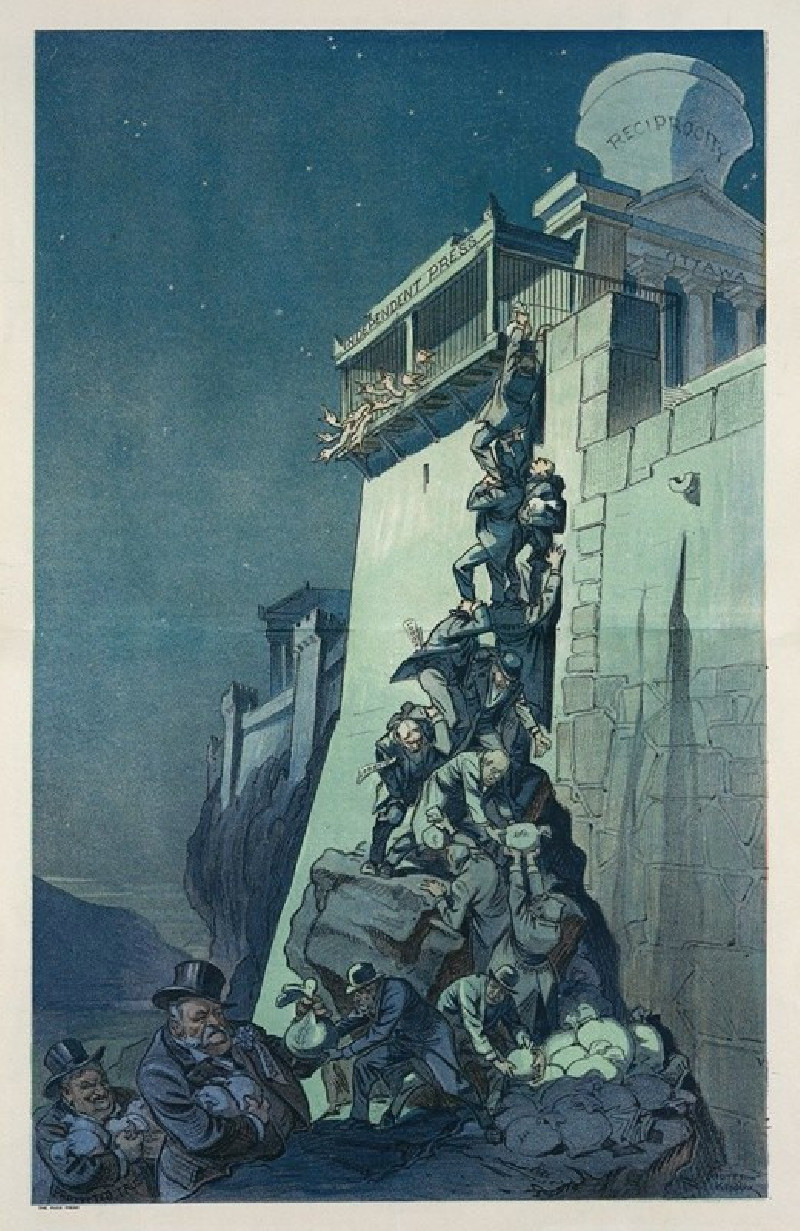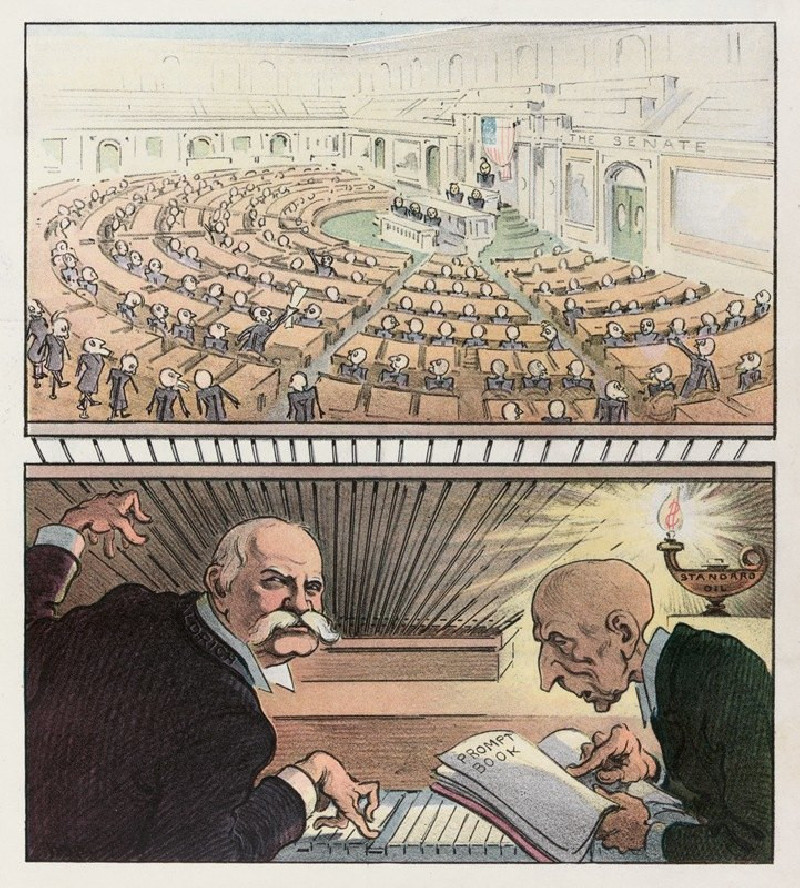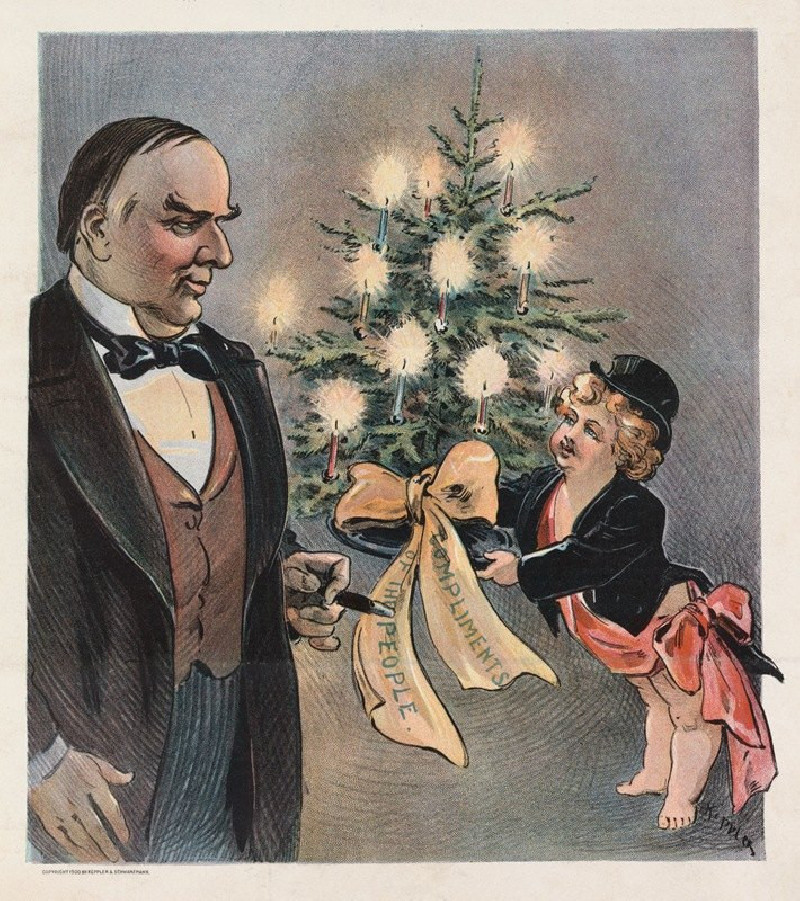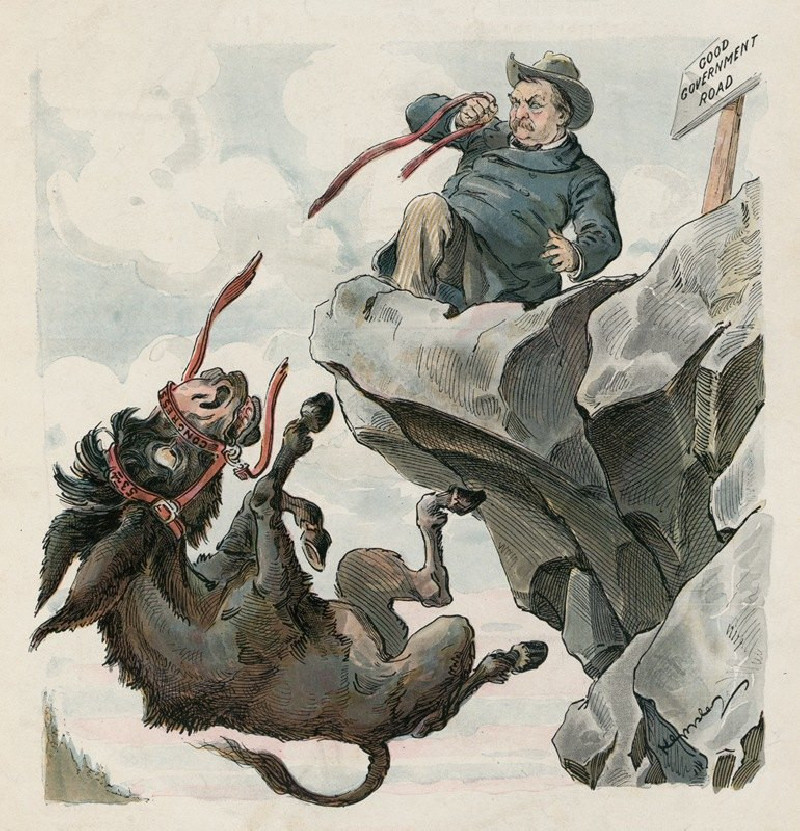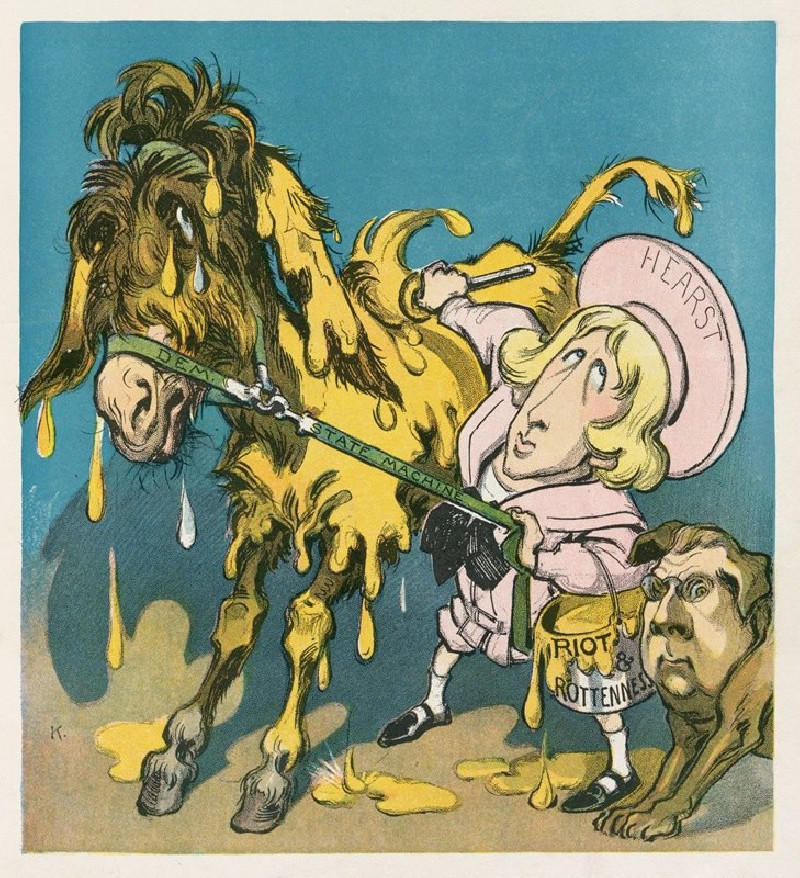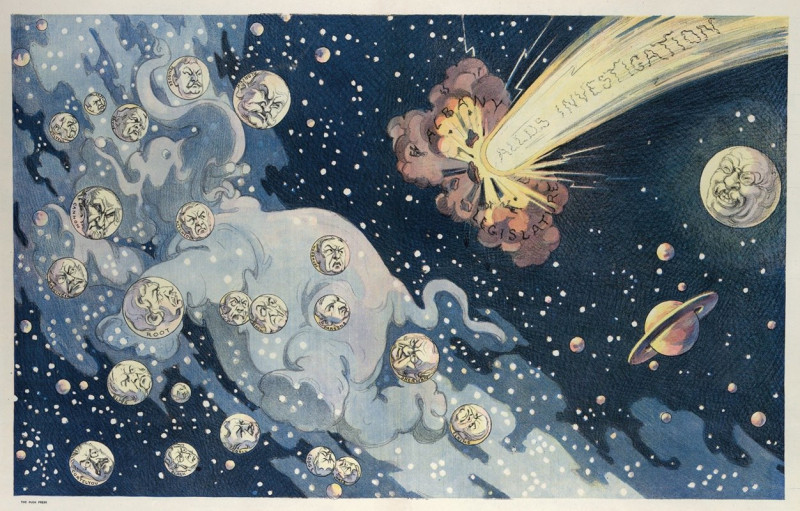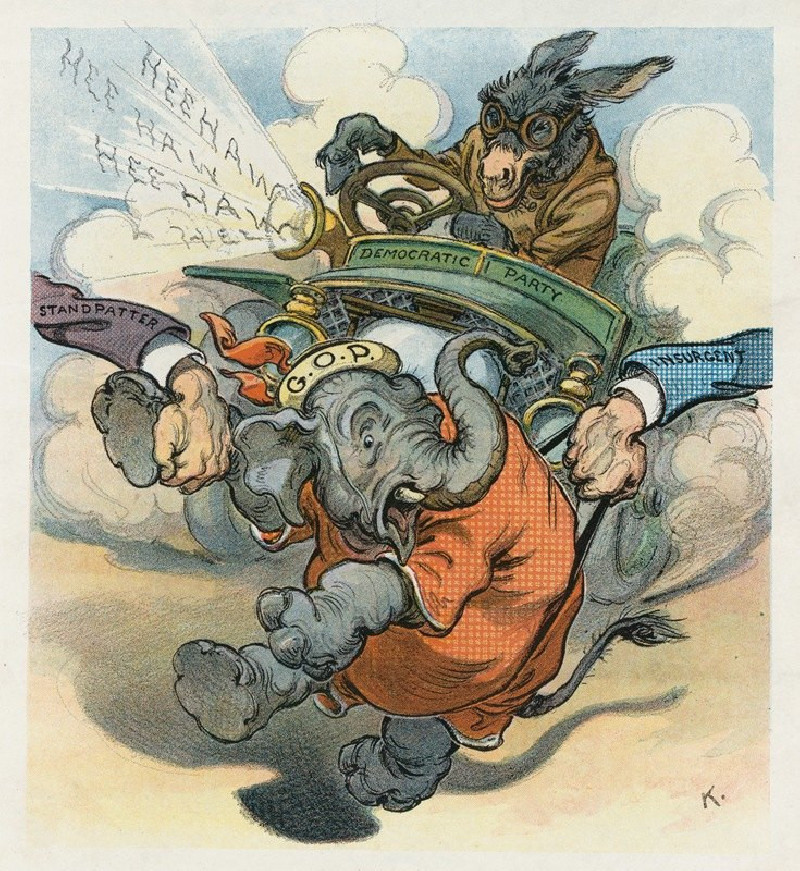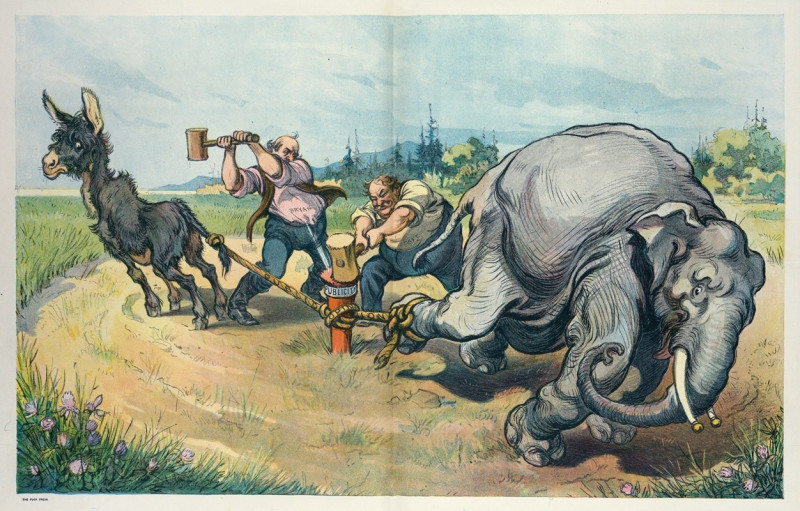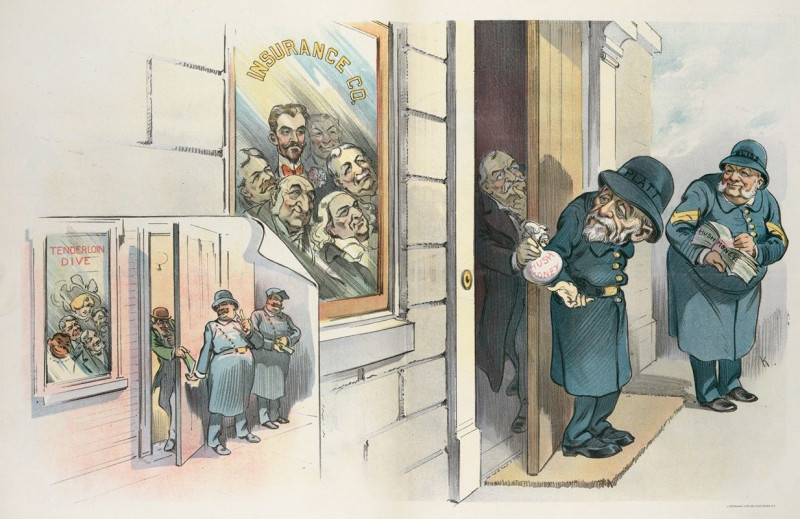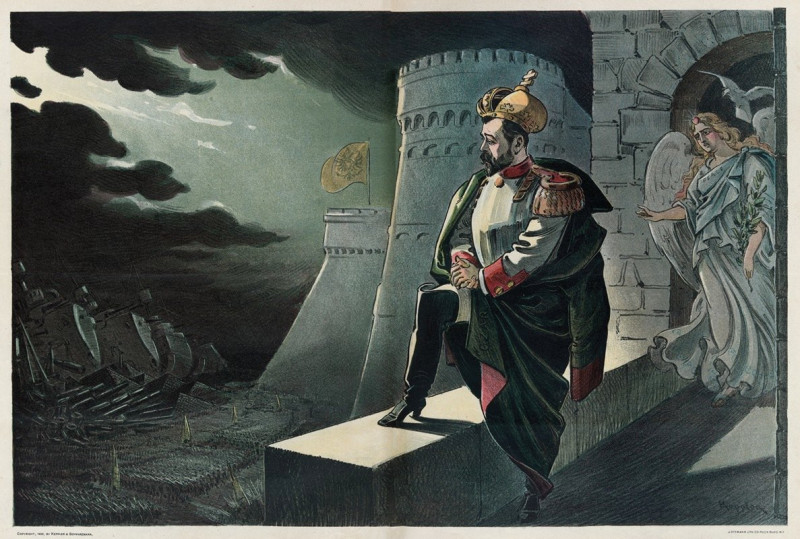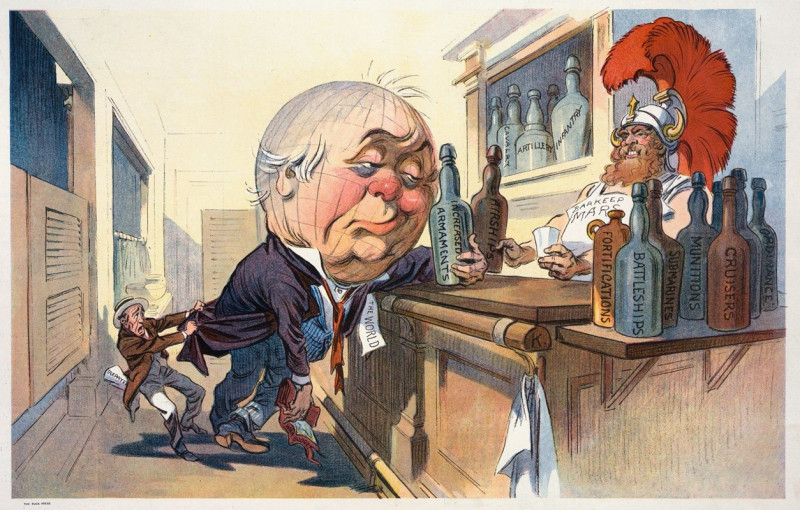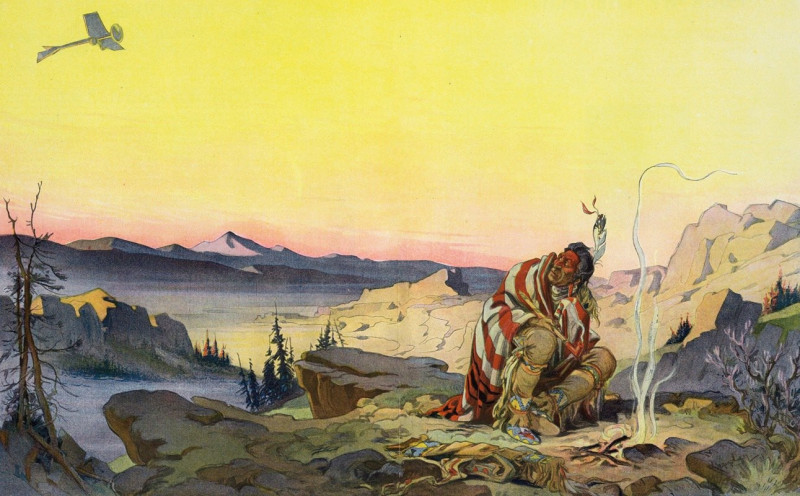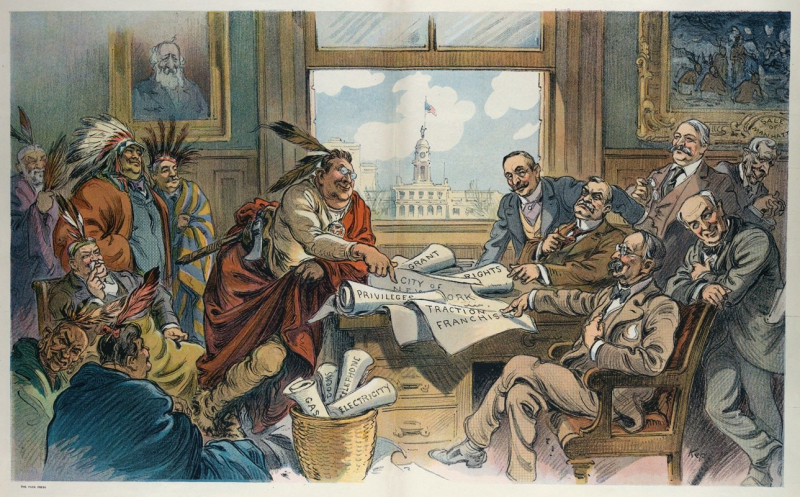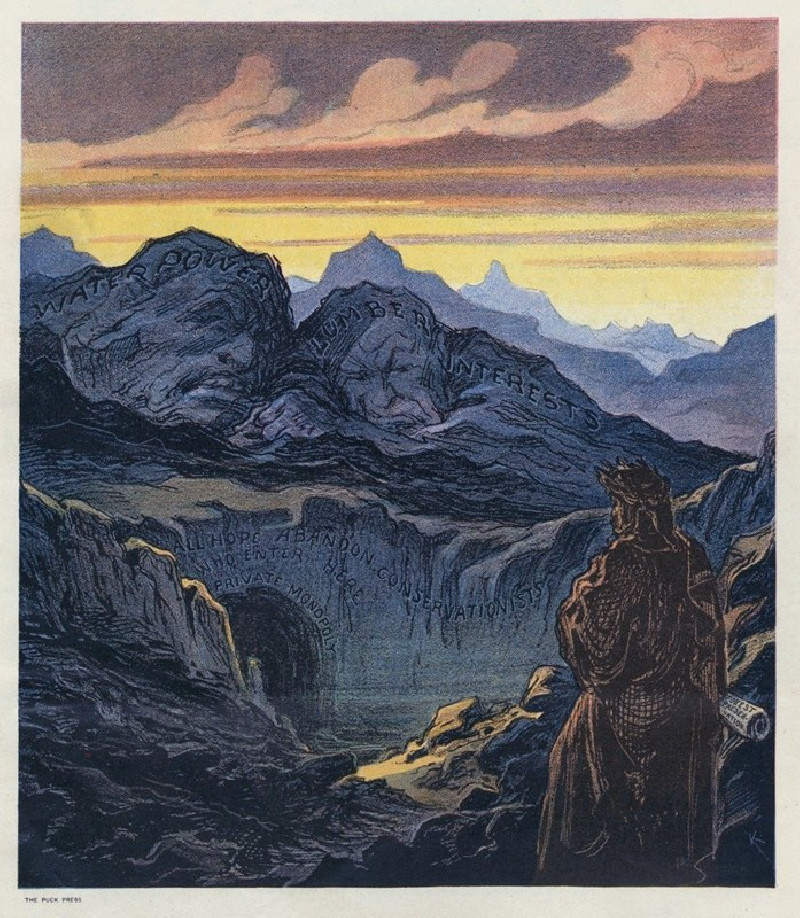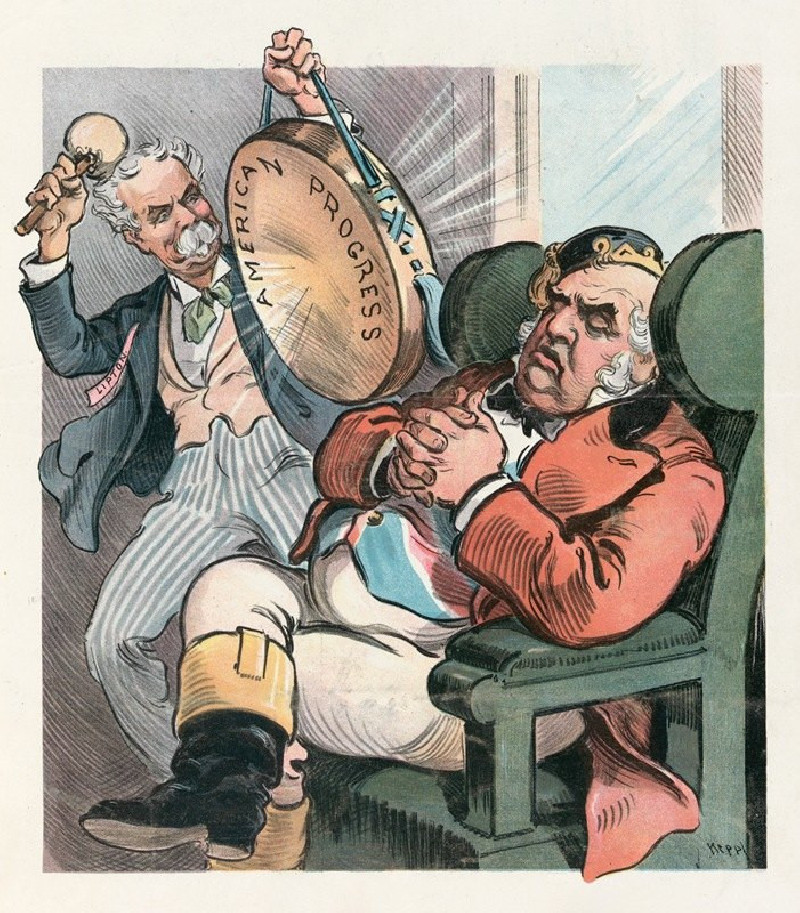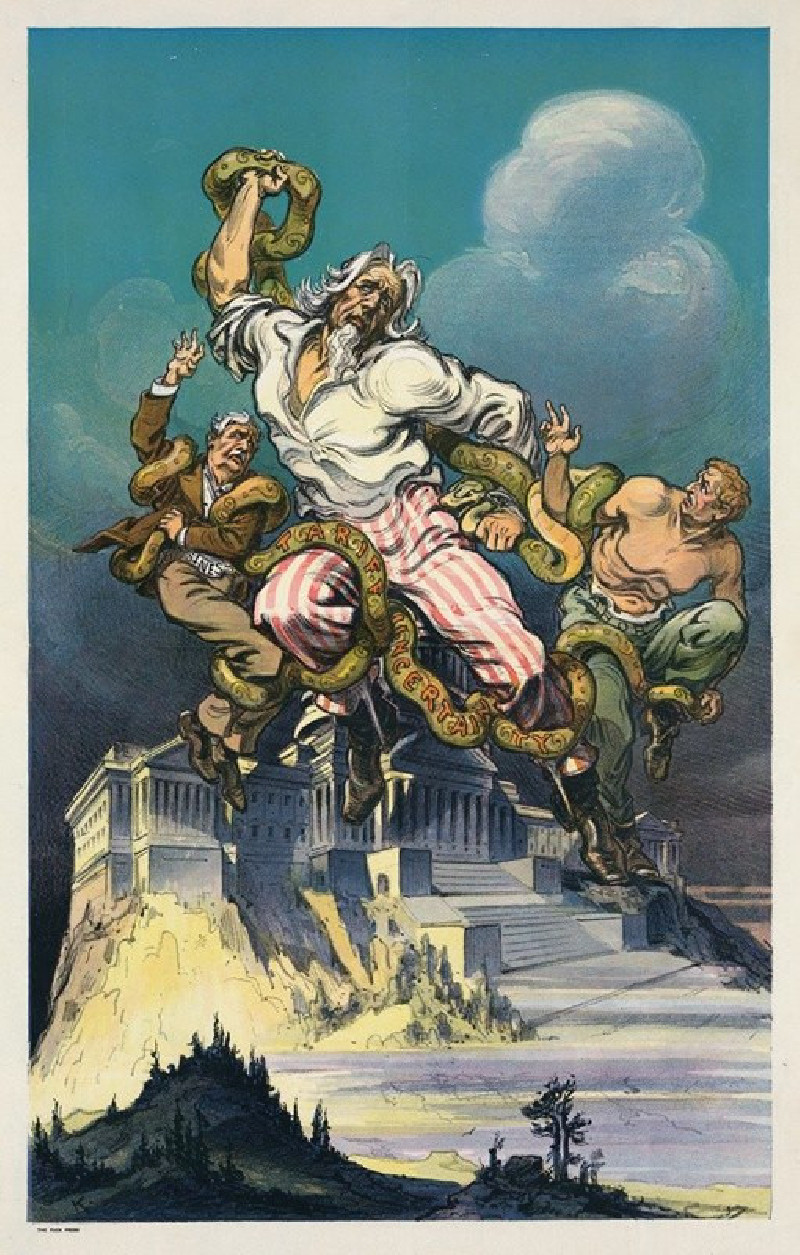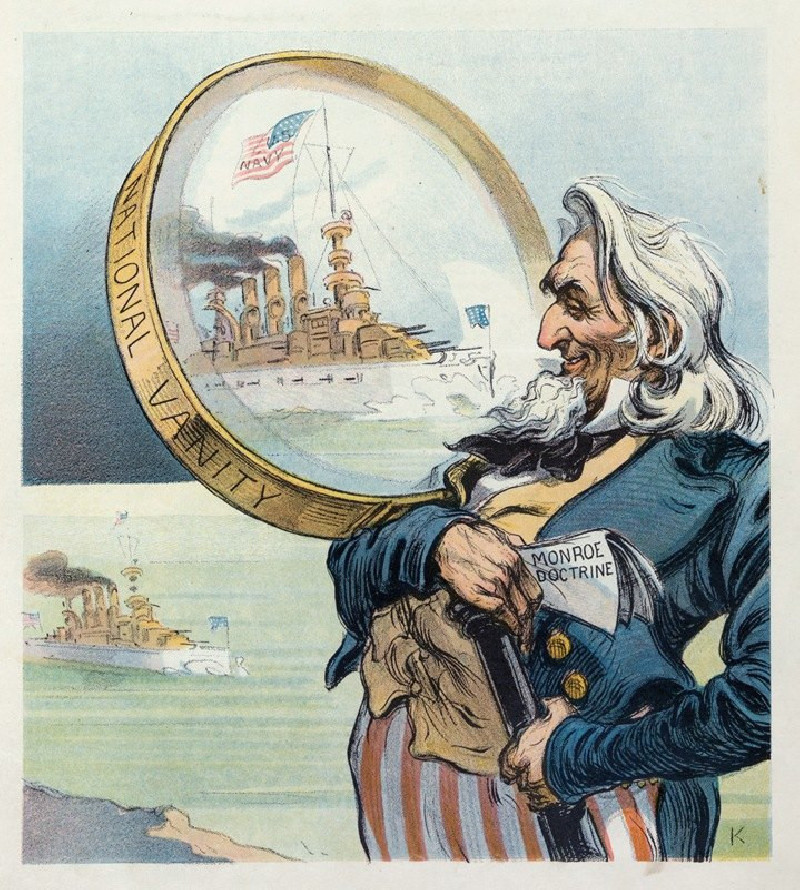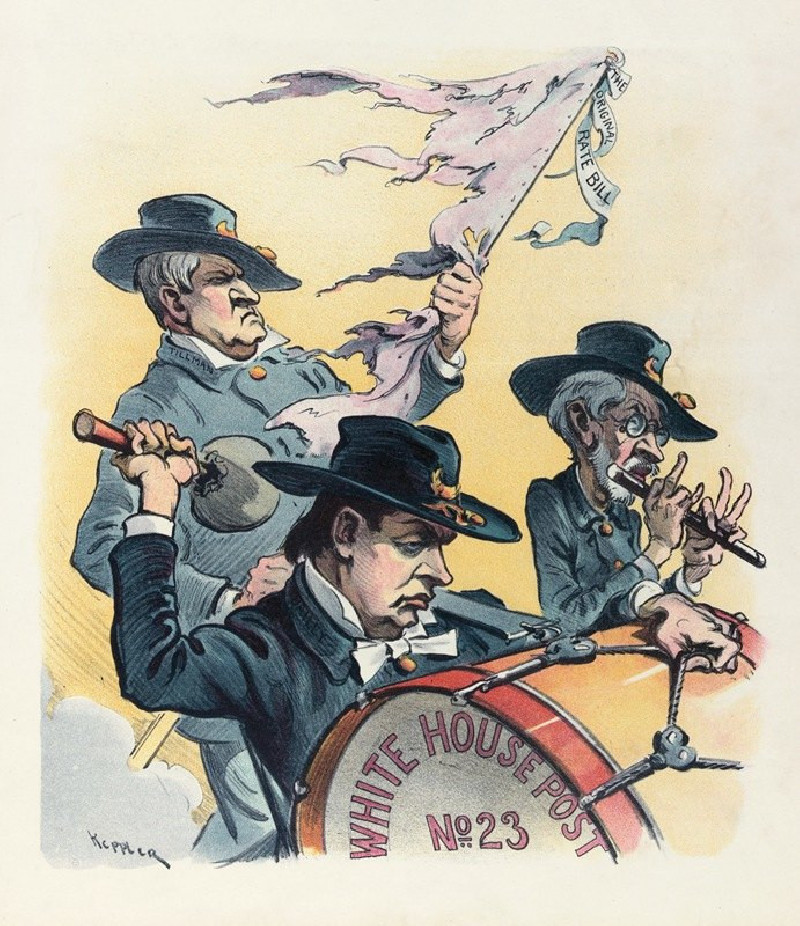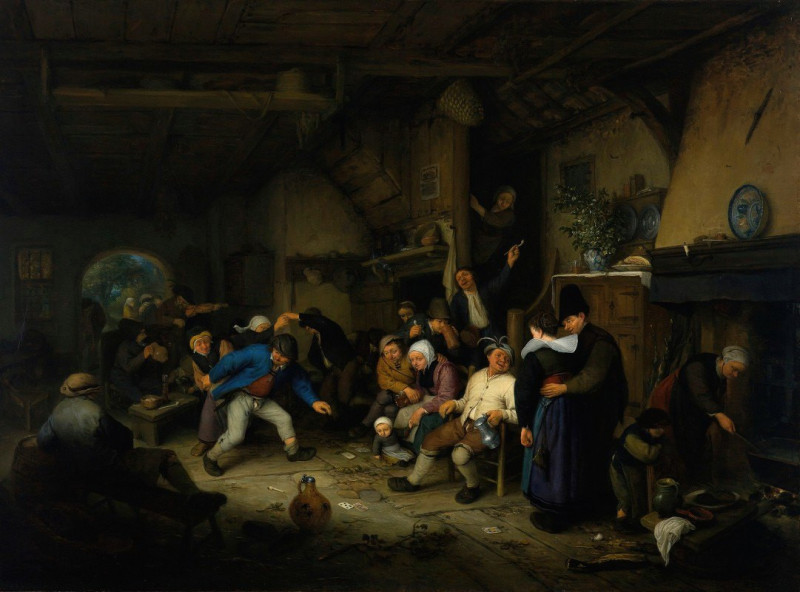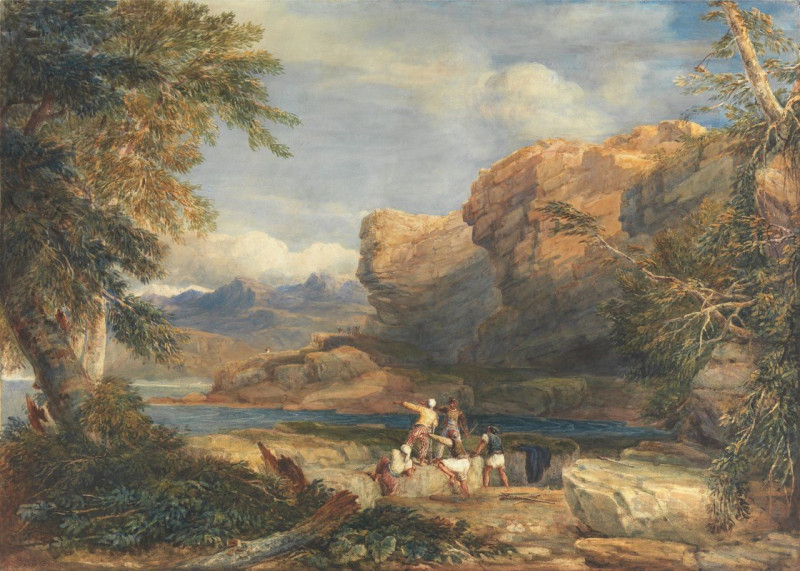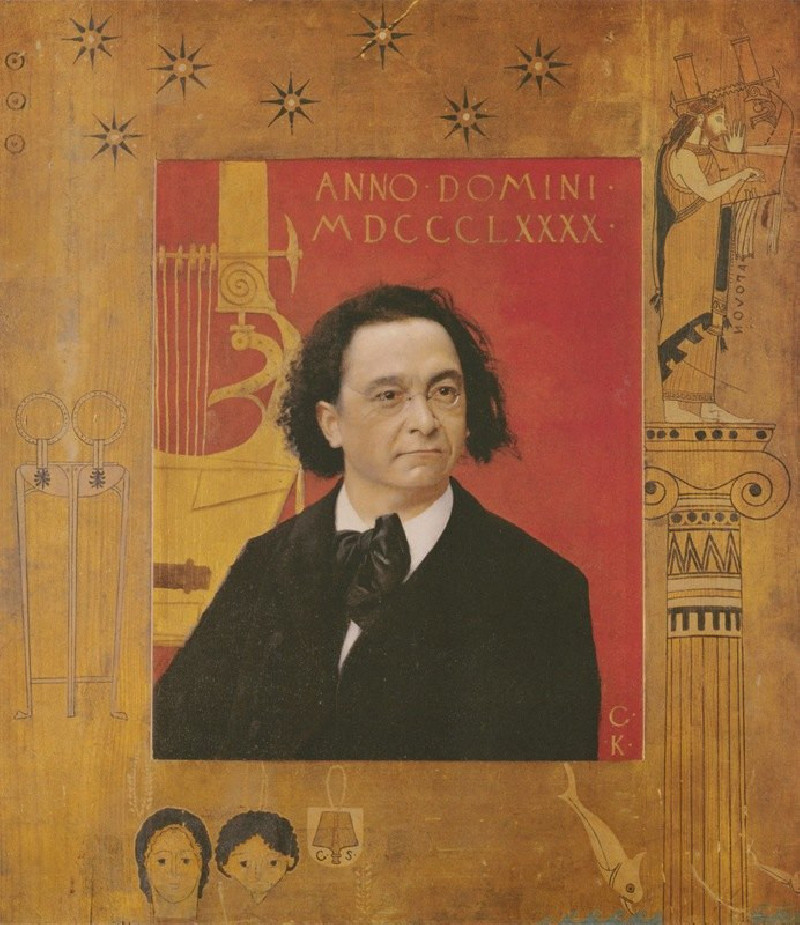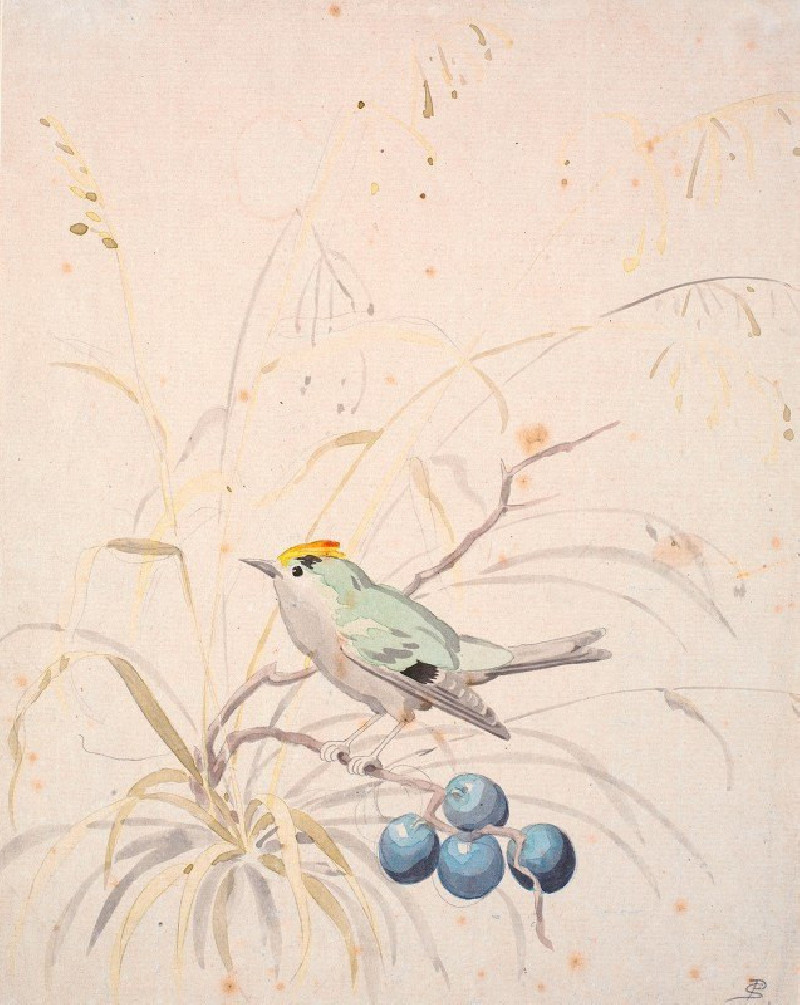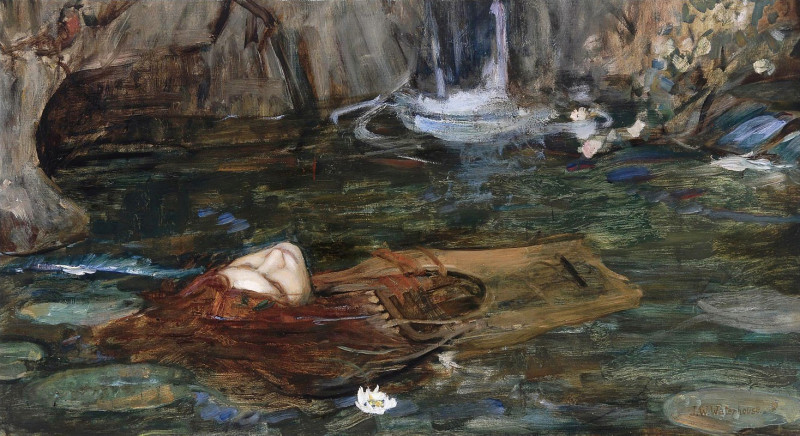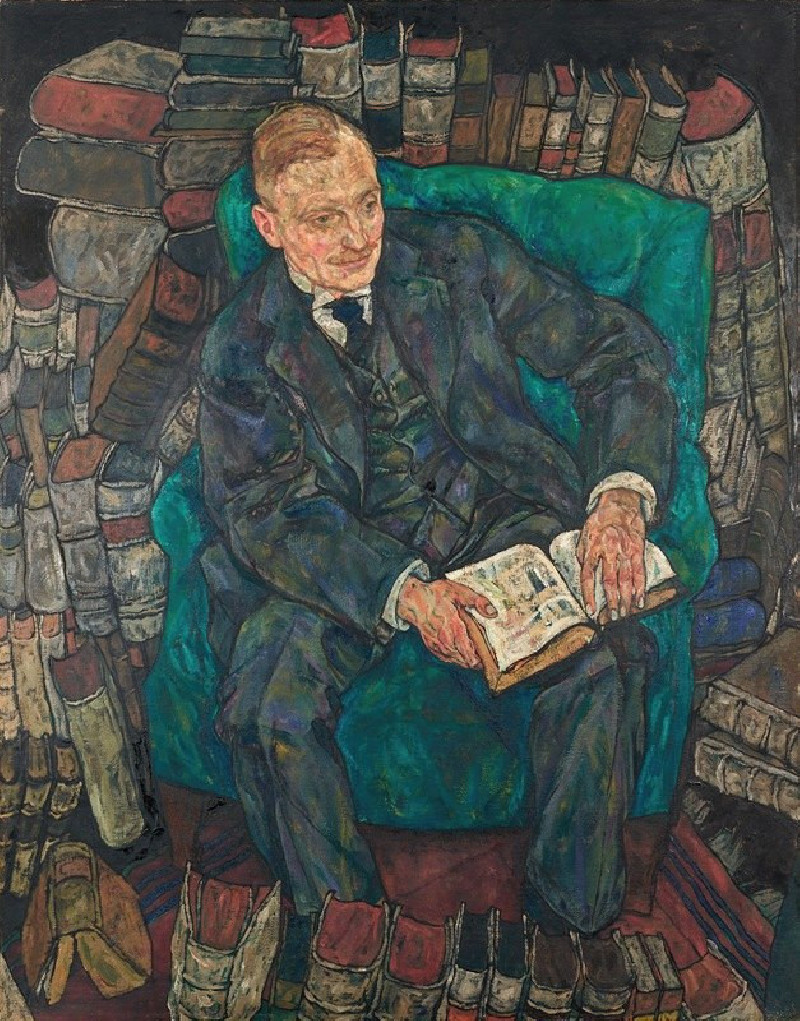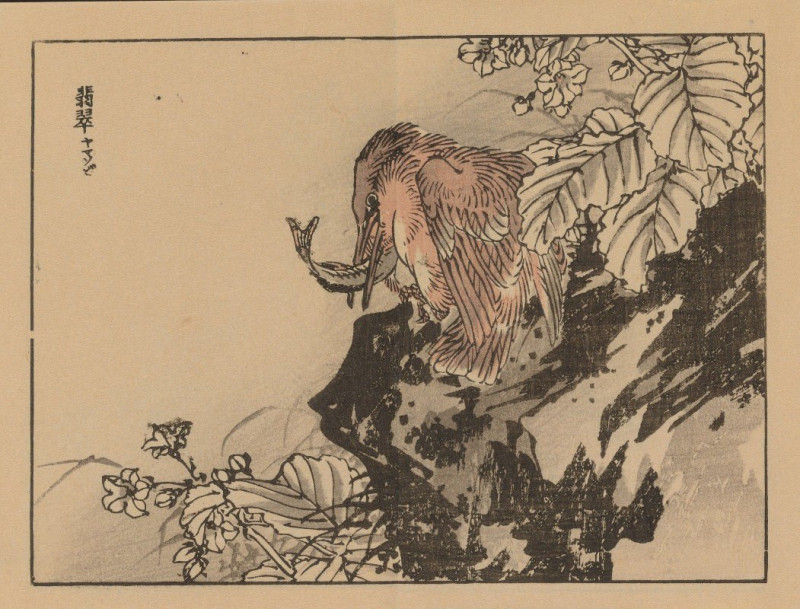Mars triumphant (1904)
Technique: Giclée quality print
Recommended by our customers
More about this artwork
"Mars Triumphant," a compelling 1904 painting by Udo Keppler, presents a striking portrayal of Mars, the Roman god of war, in a moment of overwhelming victory. The powerful figure of Mars is depicted seated on an ornate throne, dominating the composition with his formidable presence. His muscular form is highlighted, and his facial expression conveys an air of stern authority, underscoring the inevitable nature of war's triumph.At Mars' feet, a parchment reading "Wage Concessions" is being forcibly crushed, a clear representation of the often harsh realities dictated by power struggles and conflicts. This visual element starkly conveys the idea that peace and compromises are often casualties in the wake of war's harsh march.Adding to the dramatic interplay of themes, a figure embodying peace, portrayed with angelic wings and an expression of distress, flees from the overwhelming presence of Mars. This contrast between the angelic peace and the dark, brooding tone of the conquering Mars enhances the painting's emotional depth, emphasizing the painting's narrative of war's dominance over peace.Behind the central figures, colossal statues loom, their features obscured and shadowy, suggesting that the forces of war are supported by equally formidable and ancient foundations. The stark landscape extends around these figures, with soaring beams of light piercing through, perhaps symbolizing the unyielding and penetrating force of martial influence.Udo Keppler's "Mars Triumphant" serves not only as a vibrant example of early 20th-century political art but also as a timeless reminder of the perpetual conflict between war and peace, power, and surrender.
Delivery
Returns
Udo J. Keppler, since 1894. known as Joseph Keppler, Jr., was an American political cartoonist, publisher, and Native American advocate. The son of cartoonist Joseph Keppler (1838–1894), who founded Puck magazine, the younger Keppler also contributed to cartoons, and after his father's death became co-owner of the magazine under the name Joseph Keppler. He was also a collector of Native American artifacts.


